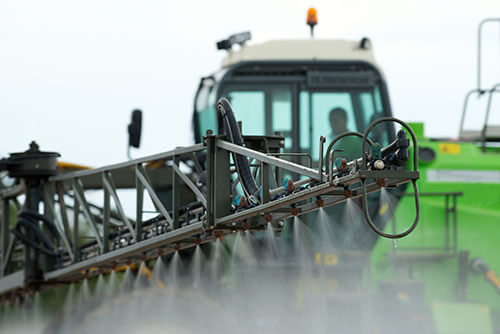5 Ways Precision Ag Can Benefit Growers
Dec 07, 2020

Precision ag has been a hot topic in the farming industry since the early 1990s, coinciding with the universal adoption of GPS (global positioning systems) and rapid growth of computing power. If a 1971 Volkswagen Beetle had advanced at the pace of personal computers over the past 34 years, today we could go 300,000 miles per hour with that car and get 2 million miles per gallon of gas — all for the mere cost of 4 cents. And GPS technology not only allows us to get quick and easy driving directions on our cell phones and fuel hundreds of everyday business and personal uses, but it also gives us new ways to better manage farm data and applications.
Equipment manufacturers, software companies, crop input suppliers, and a host of agricultural interests are implementing programs to assist growers with data gleaned from precision agriculture technology. It can be a little overwhelming to figure out how the wide range of products and services fit together to form a logical, simple solution that growers can use in their farming operations to achieve higher, more profitable yields.
Here are five ways that precision ag can benefit growers today and in the future:
1. Accuracy
The most widely adopted precision ag service has been GPS-enabled soil-sampling and variable-rate fertilizer applications. The standard 2.5-acre grid has given way to a more practical zone management strategy. Soil-sample data can be collected and analyzed to identify different areas of a field that have unique soil properties. Variable-rate application of crop nutrients can address these unique differences, placing nutrients where they are needed at the proper rate.
2. Efficiency
In today’s economic climate, there is no better time for growers to be concerned with being the most efficient with their crop input expenses. Variable-rate fertilizer, seed, and crop protection applications can make sure that dollars are spent where they are needed without over-applying or under-applying.
3. Decisions
It’s been said that “precision ag” is turning into “decision ag.” From seed selection and plant populations to resistant weed strategies, fungicide timing, and nitrogen applications, there is a seemingly never-ending number of decisions made on the farm every day, and the options are only increasing. Having more timely and accurate information about a farm and field can assist growers in the decision-making process.
4. Environment
Farmers are the world’s No. 1 stewards of the soil. Protecting our natural resources is a priority for everyone but especially the agricultural community. Precision ag technologies that employ accurate data collection paired with state-of-the-art, variable-rate control systems assist growers in making sure that crop nutrient and crop protection applications are made at the right time, right rate, and right place.
5. Information management
Big data is a term used a lot these days in all industries — and farming is no exception. Yield maps, satellite imagery, weather data, as-applied application files, scouting observations, and soil properties are just a few of the multiple data points that can be collected. Taking that much information and utilizing it to make better decisions on the farm can be a challenge, but now more than ever, we have tools available to assist growers in turning data into decisions.
Equipment manufacturers, software companies, crop input suppliers, and a host of agricultural interests are implementing programs to assist growers with data gleaned from precision agriculture technology. It can be a little overwhelming to figure out how the wide range of products and services fit together to form a logical, simple solution that growers can use in their farming operations to achieve higher, more profitable yields.
Here are five ways that precision ag can benefit growers today and in the future:
1. Accuracy
The most widely adopted precision ag service has been GPS-enabled soil-sampling and variable-rate fertilizer applications. The standard 2.5-acre grid has given way to a more practical zone management strategy. Soil-sample data can be collected and analyzed to identify different areas of a field that have unique soil properties. Variable-rate application of crop nutrients can address these unique differences, placing nutrients where they are needed at the proper rate.
2. Efficiency
In today’s economic climate, there is no better time for growers to be concerned with being the most efficient with their crop input expenses. Variable-rate fertilizer, seed, and crop protection applications can make sure that dollars are spent where they are needed without over-applying or under-applying.
3. Decisions
It’s been said that “precision ag” is turning into “decision ag.” From seed selection and plant populations to resistant weed strategies, fungicide timing, and nitrogen applications, there is a seemingly never-ending number of decisions made on the farm every day, and the options are only increasing. Having more timely and accurate information about a farm and field can assist growers in the decision-making process.
4. Environment
Farmers are the world’s No. 1 stewards of the soil. Protecting our natural resources is a priority for everyone but especially the agricultural community. Precision ag technologies that employ accurate data collection paired with state-of-the-art, variable-rate control systems assist growers in making sure that crop nutrient and crop protection applications are made at the right time, right rate, and right place.
5. Information management
Big data is a term used a lot these days in all industries — and farming is no exception. Yield maps, satellite imagery, weather data, as-applied application files, scouting observations, and soil properties are just a few of the multiple data points that can be collected. Taking that much information and utilizing it to make better decisions on the farm can be a challenge, but now more than ever, we have tools available to assist growers in turning data into decisions.